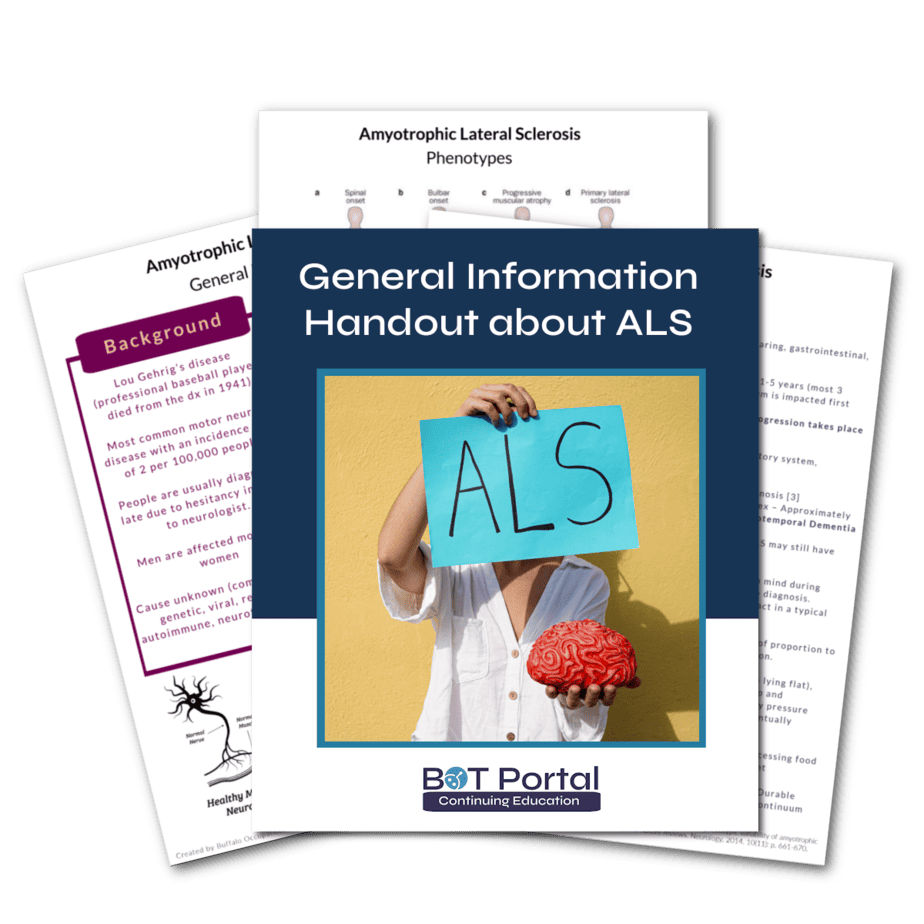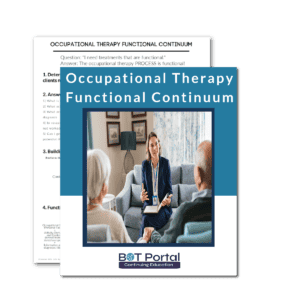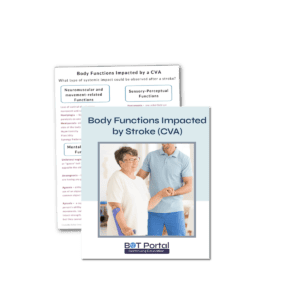Description
ALS Diagnosis Information Handouts
Amyotrophic lateral sclerosis (ALS Diagnosis), often referred to as Lou Gehrig’s disease, is a progressive neurodegenerative disorder that affects nerve cells in the brain and spinal cord. This condition leads to the degeneration of motor neurons, which are responsible for controlling voluntary muscle movement. As ALS progresses, individuals may experience muscle weakness, stiffness, twitching, and eventually paralysis.
There are several phenotypes or variations of ALS, including:
1. Spinal-onset ALS: This form of ALS primarily affects the motor neurons in the spinal cord, leading to muscle weakness and atrophy in the limbs. Individuals with spinal-onset ALS may experience difficulty walking, lifting objects, and performing fine motor tasks.
2. Bulbar-onset ALS: Bulbar-onset ALS affects the motor neurons in the brainstem, particularly those responsible for controlling speech, swallowing, and breathing. Symptoms may include slurred speech, difficulty chewing and swallowing, and respiratory problems.
3. Limb-onset ALS: Limb-onset ALS begins with weakness and muscle atrophy in the arms or legs, gradually spreading to other parts of the body. Individuals may initially notice difficulty with tasks such as buttoning shirts, writing, or lifting objects.
4. Progressive muscular atrophy (PMA): PMA is a subtype of ALS characterized by progressive muscle weakness and atrophy without significant involvement of the upper motor neurons. Individuals with PMA may experience weakness and wasting of muscles, particularly in the hands and arms.
5. Primary lateral sclerosis (PLS): PLS is a rare form of ALS that primarily affects the upper motor neurons in the brain. Symptoms include stiffness, spasticity, and weakness in the legs, arms, and facial muscles.
Occupational therapy practitioners play a vital role in supporting individuals with ALS and their families throughout the disease process. By providing education, adaptive equipment, and assistive technology, occupational therapists help individuals maintain their independence and quality of life. Recommendations may include:
– Providing adaptive equipment such as wheelchairs, walkers, and communication devices to help individuals with ALS perform daily activities more easily.
– Teaching energy conservation techniques and joint protection strategies to help individuals conserve their energy and prevent overuse injuries.
– Collaborating with other members of the healthcare team, including physical therapists, speech-language pathologists, and respiratory therapists, to develop a comprehensive care plan.
– Offering emotional support and counseling to individuals and families coping with the challenges of ALS.
To complement this information, we offer an exclusive illustration as a downloadable resource. This visual aid highlights key phenotypes and symptoms of ALS, serving as a valuable tool for both practitioners and individuals affected by the disease. By enhancing understanding and facilitating communication, the illustration supports holistic and patient-centered care approaches.
What is included?
- General information about ALS
- Phenotypes of ALS
- Symptoms of ALS
(Great for practitioners or used as patient handouts)
Other helpful links:
Check out BOT Portal: Resource Site for Occupational Therapy Students and Practitioners




